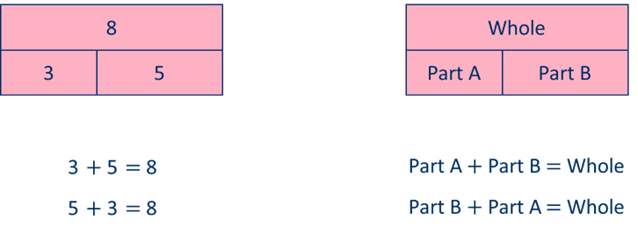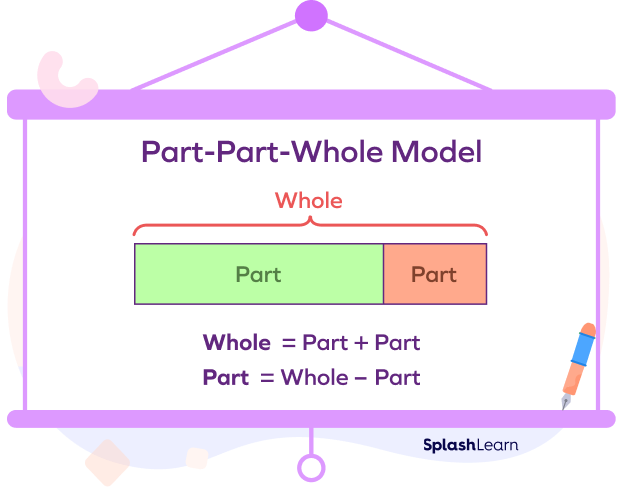The connection between visual learning and bar model drawing techniques
Wiki Article
Exploring Bar Version Illustration Techniques: A Comprehensive Guide to Envisioning Mathematics Concepts
Bar model drawing strategies serve as an important resource for both instructors and pupils in envisioning mathematical principles. These designs streamline complex mathematical relationships, assisting in the comprehension of enhancement, reproduction, subtraction, and division. This overview details reliable approaches for carrying out bar models, promoting energetic involvement and real-world connections. As readers check out the useful applications and mentor tips, they will discover just how these techniques can change their strategy to mathematics.Recognizing the Fundamentals of Bar Model Illustration
Bar model attracting serves as a powerful aesthetic device in maths, facilitating the understanding of numerical relationships and analytical techniques. This technique involves representing numbers and their partnerships with rectangle-shaped bars, making it simpler to envision procedures such as enhancement, subtraction, department, and reproduction. Each bar's size matches to a details worth, allowing students to compare amounts and recognize proportions clearly.To produce a bar model, one starts by recognizing the trouble's crucial elements, frequently damaging it down right into parts that can be aesthetically represented. In a simple addition trouble, 2 bars can be drawn, with their sizes standing for the addends. The mixed size highlights the amount. Furthermore, bar designs can be adjusted for more intricate issues, consisting of proportions and portions, by adjusting the bars appropriately. Grasping these fundamentals lays a solid foundation for effective analytical and much deeper mathematical comprehension.
Advantages of Utilizing Bar Designs in Math
Making use of bar designs in maths provides countless advantages that boost knowing and comprehension. These graphes aid trainees in understanding complicated concepts by damaging them down into manageable components. Bar designs offer a clear structure for illustrating relationships in between numbers, making abstract ideas extra concrete. They advertise a deeper understanding of mathematical procedures and help with analytic by allowing learners to visualize the information they are working with.Additionally, bar designs support the advancement of critical believing abilities, as students should analyze and analyze the aesthetic details to reason. This method encourages energetic engagement with the material, enhancing retention and proficiency of mathematical principles. By fostering a strong foundation in aesthetic literacy, bar models encourage students to come close to different mathematical challenges with confidence. On the whole, the integration of bar versions right into mathematics education and learning shows valuable in cultivating both understanding and logical capacities among pupils.
Using Bar Versions to Enhancement and Subtraction
Bar versions work as a reliable tool for visually representing enhancement and reduction problems. By showing the partnership between numbers, they improve understanding and assist in analytical. In addition, real-life applications of these versions can aid students grasp mathematical principles in functional contexts.Standing For Enhancement Visually
When pupils encounter enhancement and subtraction problems, visual help can considerably enhance their understanding of these operations. Bar designs function as efficient tools for representing enhancement. By separating a rectangle right into segments that match to the numbers entailed, trainees can envision the connection between the amounts. For example, if a student needs to add 3 and 5, they can produce a bar separated right into two sections: one area standing for 3 and the various other representing 5. This clear representation not only simplifies the enhancement procedure but additionally strengthens the idea of combining quantities. As students control these aesthetic help, they establish a much deeper comprehension of addition, resulting in improved analytic skills and greater self-confidence in their mathematical abilities.
Subtraction With Bar Versions
Although subtraction is typically viewed as a much more complex operation than addition, bar models can properly clarify this procedure for students. By aesthetically representing the quantities entailed, students can much better understand how numbers connect to each other. In a bar design for reduction, one bar stands for the total amount, while another suggests the amount being deducted. This aesthetic distinction aids students grasp the principle of "taking away." If a bar reveals 10 devices, and an additional bar standing for 4 units is eliminated, pupils can easily see that 6 systems remain. This method not only fosters understanding of subtraction but likewise aids in creating problem-solving skills, enabling students to envision their mathematical thinking and improve their general understanding of mathematical principles.Real-Life Application Examples
Recognizing subtraction through bar models lays a structure for using these methods in real-life scenarios. In numerous contexts, such as budgeting or purchasing, people can envision just how much cash continues to be after expenditures. If an individual has $50 and spends $20, a bar model can stand for the overall amount and the invested portion, highlighting that $30 is left. Additionally, parents can make use of bar designs to aid youngsters understand exactly how lots of more products require to be included in complete a collection, such as having 3 apples and needing 5. This aesthetic representation simplifies intricate problems, promoting comprehension and retention. Eventually, bar versions function as reliable devices in daily decision-making, improving mathematical understanding in practical circumstances.Imagining Reproduction and Division With Bar Designs
In checking out the application of bar models for reproduction and department, it is necessary to grasp their fundamental principles. Constructing multiplication versions allows students to picture connections between numbers, while reliable department approaches can be highlighted through these visual aids. This approach enhances comprehension and problem-solving skills in mathematics.Understanding Bar Designs
Bar designs work as a powerful visual device for illustrating the principles of reproduction and department. They enable learners to stand for mathematical relationships in an organized style, promoting a much deeper understanding of these operations. In reproduction, bar models present groups of equal size, enabling individuals to visualize the complete quantity when combining these groups. Conversely, in division, bar versions assist show just how an overall is separated into smaller sized, equivalent parts, clarifying the idea of partitioning. By employing these aesthetic help, pupils can grasp the underlying concepts of reproduction and division better. This strategy not only enhances understanding however also sustains problem-solving abilities, making bar designs an invaluable property in mathematical education and learning.Building Multiplication Versions
Creating reproduction versions using bar diagrams provides a clear technique for imagining the process of multiplication. These versions enable learners to represent reproduction as teams of equal parts, making abstract principles a lot more concrete. For example, to highlight (3 times 4), a trainee can draw one bar separated into 3 equivalent segments, each standing for four devices. Additionally, developing a second bar with the very same size strengthens the understanding of repeated addition, as each sector represents one group. This visual depiction not just help read more in comprehending multiplication however also boosts analytic skills. By using bar models, students can better understand relationships between numbers and develop a robust foundation for much more intricate mathematical ideas, leading to enhanced confidence in their capacities.Imagining Department Approaches

Resolving Word Problems Utilizing Bar Model Techniques

In a problem involving enhancement and reduction, trainees can draw separate bars for each amount and after that adjust them to locate the solution. This procedure not only clarifies the problem yet additionally promotes a deeper conceptual understanding. In addition, bar models can be adapted for different sorts of word problems, making them versatile throughout various mathematical subjects. Inevitably, making use of bar versions can greatly boost pupils' analytical skills by offering a clear visual path to reach the appropriate answer.
Integrating Bar Versions in Different Math Topics
Bar versions can be flawlessly integrated into different math subjects, improving trainees' understanding of ideas beyond standard math. In algebra, these visual tools help in standing for inequalities and equations, making it possible for learners to picture relationships between variables. When taking on geometry, bar models can show the buildings of shapes and spatial reasoning, aiding students comprehend principles like area and border efficiently. In data, bar models promote the interpretation of information collections, allowing trainees to contrast quantities and acknowledge trends visually. In addition, integrating bar versions within measurement topics help in understanding devices and conversions by providing a concrete representation of amounts. By utilizing bar models across various mathematical locations, instructors can cultivate a deeper comprehension of complex concepts, thus enhancing analytical abilities and promoting essential reasoning (bar model drawing techniques). This flexibility demonstrates the utility of bar models as a foundational tool for students in their mathematical journeyTips for Teaching Bar Models Efficiently
Incorporating bar versions into teaching methods needs thoughtful methods to optimize their effectiveness. Educators should begin by introducing bar models with simple, relatable examples that students can easily grasp. This aids to construct self-confidence and experience with the concept. Gradually increasing the intricacy of troubles permits students to apply their skills progressively. In addition, instructors ought to encourage pupils to develop their own bar models, advertising energetic interaction and ownership of their knowing.Incorporating collaborative tasks can also enhance understanding, as pupils go over and resolve issues in groups. Constant feedback is vital; teachers should give positive commentary on pupils' bar design depictions to assist improvement. Ultimately, linking bar models to real-life scenarios strengthens their relevance, aiding trainees see the sensible applications of their mathematical skills. By executing these approaches, instructors can properly harness the power of bar models in their maths guideline.
Regularly Asked Questions
Can Bar Models Be Used in Various Other Subjects Besides Math?
Bar designs can without a doubt be made use of in various topics past mathematics. They efficiently highlight concepts in science, social research studies, and language arts, aiding to visually represent connections, procedures, and concepts for enhanced understanding across self-controls.What Age Is Best Fit for Understanding Bar Models?
Bar versions are best suited for kids ages 7 to 12, as they develop concrete thinking abilities throughout this duration (bar model drawing techniques). At this age, students can efficiently comprehend abstract principles via visual representation and analytical strategiesExist Digital Devices for Creating Bar Designs?

How Can I Evaluate Pupil Comprehending of Bar Designs?
Examining pupil understanding of bar models can include quizzes, observational assessments, and seminar. Educators might likewise evaluate students' completed designs and their capability to discuss their thinking, ensuring a thorough analysis of understanding.What Prevail Errors When Using Bar Versions?
Typical blunders when using bar designs consist of misrepresenting amounts, failing to properly label bars, puzzling enhancement and subtraction, disregarding to use regular ranges, and neglecting the relevance of clear visual splitting up in between different aspects.In enhancement, bar models can be adapted for more complicated troubles, including portions and proportions, by readjusting the bars appropriately. Reduction is frequently regarded as a more complex operation than enhancement, bar versions can effectively clarify this process for trainees. In a bar version for reduction, one bar stands for the total, while one more suggests the quantity being deducted. If a bar reveals 10 devices, and another bar standing for 4 devices is gotten rid of, students can easily see that 6 units stay. When splitting an overall right into equivalent teams, pupils can attract a lengthy bar to stand for the entire and after that segment it into smaller bars that suggest each group.
Report this wiki page